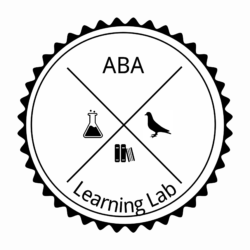Brian Kaminski, RBT, Graduate Student of Behavior Analysis
Within my organization I am heavily involved in behavior technician training. I will always solicit feedback following a presentation and one particular response I received still resonates with me to this day.
I think it speaks to a common thread I have detected in clinical practice as well as my own personal experience:
“I look forward to your next training to see what you have to offer.
I especially appreciate your willingness to consider offering tips for working with older kids and young adults. Adolescence is hard!
New techs would greatly benefit from seeing what ABA looks like with older clients … (much) different than a preschooler or grade school child!”
This behavior technician’s honest feedback was spot on – for a number of reasons.
First, the physical differences of working with a child in early intensive ABA versus an adolescent or adult are undeniable. This impacts dimensions of therapy ranging from the selection of prompt type to components of a behavior intervention plan.
As this staff member went on to write, “Some [behavior technicians may] not be ready for serious behaviors coming from someone their own size! Or how to deal with adolescent behavior in general.”
Secondly, the target behaviors of therapy may vary drastically depending on the age of the learner. While the treatment plan of an early learner may emphasize academic or school readiness skills, an adult receiving ABA services might have programs targeting vocational or independent living skills.
Thirdly, the method of teaching may be considerably different between age groups. While more traditional “table time” and discrete trial training (DTT) is heavily relied upon for early learners, older clients might solely receive Natural Environment Training (NET) or incidental teaching. This often means that therapy “looks” much different across age groups – as it should! However, that transition in instructional approach can be a challenging learning curve for therapists to navigate.
Before jumping into procedural or technical differences between age groups, I would like to start at a more fundamental level: common etiquette.
Many behavior technicians will work in the field for years before providing services to an adolescent or young adult, so it is important to recognize behaviors they can adopt which promote client dignity and respect.
Speaking About Adults With Disabilities in Ways That Reflect Dignity
(Reid, Rosswurm, & Rotholz, 2017)
- Do not speak about a person with a disability in their immediate presence without involving them in the conversation
- Refer to the person, not a behavioral characteristic (e.g. If client engages in property hoarding behavior, never refer to them as a “hoarder”)
- Avoid using the term “low functioning.” Consider people-first language, such as someone with “more significant” or “more severe” skill deficits.
- Respect the adult status of the person. Refrain from “age inappropriate treatment” or treating them as if they were a child.
Behaving in Ways That Reflect Dignity
(Reid, Rosswurm, & Rotholz, 2017)
- When escorting or traveling with an adult with a disability, walk side by side with the person, not in front of the person.
- If it is necessary to physically prompt movement, do so from the side by guiding the elbow or with a hand lightly on the lower back. Never pull or tug on the person.
- In a group setting, sit alongside the individual rather than therapists sitting in one location and those with disabilities sitting in another location.
- Refrain from eating or drinking in the presence of individuals with disabilities when they do not have opportunities to eat or drink
- Support a dignified appearance: When an individual’s grooming or attire may place them in an undignified light, take immediate action to assist with their appearance (e.g. offer to help clean up a spill on their clothing)
While these recommendations are simply a starting point for clinical practice, incorporating these behaviors into ABA therapy will help foster long, meaningful rapports with the older clients we are privileged to serve.
When in doubt, I encourage you to practice the “Golden Rule” – how would I like to be treated?
References
Reid, D. H., Rosswurm, M., & Rotholz, D. A. (2017). No Less Worthy: Recommendations for Behavior Analysts Treating Adults with Intellectual and Developmental Disabilities with Dignity. Behavior Analysis in Practice, 11 (1), 71-79.

